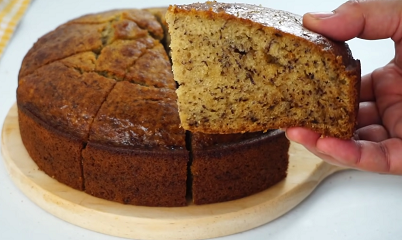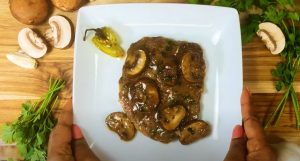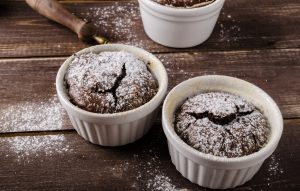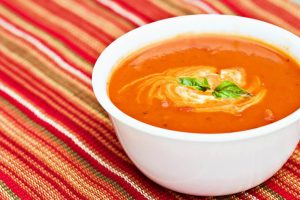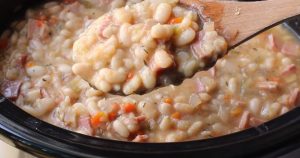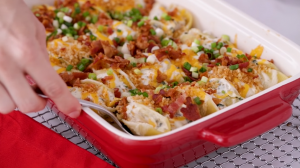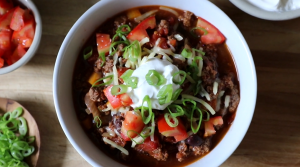Spaghetti Bolognese is a hearty Italian dish that is a favorite in many households. It is perfect for family dinners or when you have guests over. The rich flavors of the beef, tomatoes, and herbs blend perfectly with the spaghetti to create a delicious, satisfying meal.
Most of the ingredients for Spaghetti Bolognese are common pantry staples. However, passata may not be readily available in some households. It is a type of uncooked tomato puree that has been strained of seeds and skins. You can find it in the pasta sauce aisle of most supermarkets. If unavailable, a good quality canned tomato sauce can be a suitable substitute.
Ingredients for Spaghetti Bolognese
Olive oil: A healthy cooking oil that adds a mild flavor to the sauce.
Onion: Gives depth and sweetness to the sauce.
Garlic: Adds a pungent kick and aroma.
Carrots: Adds sweetness and texture.
Zucchini: Provides additional texture and nutrition.
Minced beef: The main protein of the dish.
Tomato paste: Concentrated tomato flavor.
Red wine: Adds complexity and depth to the sauce.
Passata: Tomato puree that forms the base of the sauce.
Vegetable stock powder: Enhances the flavor of the sauce.
Oregano: A classic Italian herb that adds aroma and flavor.
Low fat cream: Adds creaminess to the sauce.
Parsley: Fresh herb for garnish.
Parmesan cheese: A hard Italian cheese that adds a salty, umami flavor.
Spaghetti: The pasta base of your dish.
Salt: Enhances all other flavors.
One reader, Alain Carl says:





This spaghetti bolognese recipe is a game-changer! The combination of flavors is simply divine. The sauce is rich and hearty, and the addition of red wine gives it a unique depth. It's now a family favorite, and I love how versatile it is. A definite must-try for all pasta lovers!
Essential Techniques for Making Spaghetti Bolognese
How to sauté vegetables: In a large saucepan, heat the oil and add the onions, garlic, carrots, and zucchini. Sauté for about 3 minutes or until the vegetables are soft and fragrant.
How to brown minced beef: Add the minced beef to the sautéed vegetables and cook until browned.
How to thicken the sauce: After adding the passata and other ingredients, cover the pan with a lid and simmer for about 20 to 30 minutes or until the sauce has thickened, stirring occasionally.
How to cook spaghetti: In a pot of boiling salted water, cook the spaghetti until al dente. Drain and toss with a couple of ladlefuls of the bolognese sauce until the pasta is well coated.
How to serve: Divide the spaghetti between serving dishes, top with additional bolognese sauce, and sprinkle with parmesan cheese and parsley before serving.
How To Make Spaghetti Bolognese
A rich and thick bolognese sauce loaded with ground beef, tomatoes, and herbs and spices serve as the star of this spaghetti bolognese recipe.
Serves:
Ingredients
- 1tbspolive oil
- 1largeonion,chopped
- 2clovesgarlic,crushed
- 2carrots,grated
- 1zucchini,grated
- 1lbminced beef,extra lean
- 1tbsptomato paste
- 80mlred wine,optional
- 24ozPassata Cooking Sauce
- 2tspvegetable stock powder,or salt to season
- 2tsporegano,dried
- 3tbsplow fat cream,or low fat milk
- handfulparsley,freshly chopped
- parmesan cheese,freshly grated, to serve
- 1lbspaghetti
- Salt,for the pasta cooking water
Instructions
-
Heat the oil in a large saucepan; add the onions, garlic, carrots and zucchini. Fry for about 3 minutes or until vegetables are soft and fragrant.
-
Add the beef and fry until browned. Add the tomato paste; pour in the wine and boil until it has reduced and thickened. Reduce heat and stir in the Passata, vegetable stock powder (or salt), and oregano.
-
Cover pan with a lid and simmer for about 20 to 30 minutes or until the sauce has thickened, stirring occasionally. Turn off heat; add the cooking cream (or milk) and stir until combined.
-
Cook the spaghetti in a pot of boiling salted water. Drain; add 2 ladlefuls of the sauce and mix until pasta is covered.
-
Divide between 6 serving dishes; top with extra sauce and sprinkle with Parmesan cheese and parsley.
Nutrition
- Calories: 610.41kcal
- Fat: 12.34g
- Saturated Fat: 4.61g
- Trans Fat: 0.23g
- Monounsaturated Fat: 5.44g
- Polyunsaturated Fat: 1.41g
- Carbohydrates: 88.66g
- Fiber: 7.55g
- Sugar: 13.21g
- Protein: 35.32g
- Cholesterol: 69.48mg
- Sodium: 1046.16mg
- Calcium: 100.19mg
- Potassium: 1456.48mg
- Iron: 6.42mg
- Vitamin A: 303.43µg
- Vitamin C: 32.17mg
One Simple Technique to Elevate Your Spaghetti Bolognese
When preparing your spaghetti, ensure that the water is at a rolling boil before adding the pasta. This will prevent the spaghetti from sticking together. Additionally, stirring the spaghetti occasionally while it cooks will also help to keep it separate. For the bolognese sauce, it's important to let it simmer for the full 20 to 30 minutes. This allows the flavors to meld together and the sauce to thicken, resulting in a richer, more flavorful dish.
Time-Saving Tips for Preparing Spaghetti Bolognese
Prep ahead: Chop and prepare all the vegetables and meat in advance to streamline the cooking process.
One-pot wonder: Consider using a large pot to cook the pasta and the sauce simultaneously, saving time and reducing clean-up.
Multitask: While the sauce is simmering, use that time to cook the spaghetti, maximizing efficiency in the kitchen.
Freeze extra: Make a double batch of the bolognese sauce and freeze the extra portion for a quick and convenient meal in the future.
Kitchen organization: Keep your kitchen organized and tidy to easily locate ingredients and utensils, preventing unnecessary time wastage.
Substitute Ingredients For Spaghetti Bolognese Recipe
olive oil - Substitute with avocado oil: Avocado oil has a similar mild flavor and high smoke point, making it a suitable substitute for olive oil in cooking.
minced beef - Substitute with ground turkey: Ground turkey is a leaner alternative to beef and can be used to make a lighter version of spaghetti bolognese.
spaghetti - Substitute with zucchini noodles: Zucchini noodles, also known as zoodles, can be a low-carb and gluten-free alternative to traditional spaghetti.
red wine - Substitute with beef broth: Beef broth can add depth of flavor similar to red wine in the bolognese sauce without the alcohol content.
low fat cream - Substitute with coconut milk: Coconut milk can provide a creamy texture and a hint of sweetness to the bolognese sauce, while also being dairy-free.
parmesan cheese - Substitute with nutritional yeast: Nutritional yeast can offer a similar umami and cheesy flavor to dishes, making it a vegan-friendly alternative to parmesan cheese.
How to Beautifully Present Spaghetti Bolognese
Elevate the plating: When presenting the spaghetti bolognese, focus on creating a visually appealing plate. Use a pair of tongs to twirl the spaghetti into a neat, vertical stack, and carefully spoon the rich bolognese sauce over the top, allowing it to cascade down the sides of the pasta.
Garnish with precision: Add a final touch of elegance by finely grating parmesan cheese over the top of the dish. Sprinkle freshly chopped parsley around the edges of the plate for a pop of color and a burst of freshness.
Embrace the art of symmetry: Place the spaghetti bolognese in the center of the plate, ensuring that the stack of pasta is perfectly aligned. This attention to detail will showcase your culinary finesse and precision.
Incorporate negative space: Allow the dish to breathe by leaving some areas of the plate uncovered. This will create a sense of balance and sophistication, drawing the eye to the beautifully presented spaghetti bolognese.
Focus on the plateware: Select a pristine, white plate to serve as the canvas for your masterpiece. The simplicity of the plate will allow the vibrant colors of the spaghetti bolognese to take center stage, enhancing the overall presentation.
Essential Kitchen Tools for Making This Recipe
- Large saucepan: A deep cooking vessel used for making sauces, soups, and stews.
- Chef's knife: A versatile kitchen knife used for chopping, slicing, and dicing ingredients.
- Cutting board: A durable board used as a surface for cutting fruits, vegetables, and meats.
- Wooden spoon: A cooking utensil used for stirring, mixing, and serving various dishes.
- Grater: A kitchen tool used to grate ingredients such as cheese, vegetables, or chocolate.
- Pot: A cooking container typically used for boiling, stewing, or making sauces.
- Colander: A bowl-shaped kitchen utensil with perforations used for draining foods such as pasta or rinsing vegetables.
- Measuring cups and spoons: Tools used for accurately measuring ingredients in cooking and baking.
- Lid: A cover for the saucepan used to trap heat and steam during cooking.
- Tongs: A utensil with two arms and a pivot used for picking up and holding foods.
- Grater: A kitchen tool used to grate ingredients such as cheese, vegetables, or chocolate.
- Serving dishes: Plates or bowls used for serving and presenting food.
- Pot: A cooking container typically used for boiling, stewing, or making sauces.
- Ladle: A long-handled spoon with a deep bowl for serving soups, stews, and sauces.
- Parmesan cheese grater: A tool specifically designed for grating parmesan cheese.
- Pasta pot: A large, deep pot with a strainer insert designed for cooking and draining pasta.
Storing and Freezing Spaghetti Bolognese: A Guide
Allow the spaghetti bolognese to cool completely before storing or freezing. This will prevent the sauce from continuing to cook and becoming overcooked or mushy.
To store in the refrigerator, transfer the cooled bolognese sauce to an airtight container. It will keep well in the fridge for up to 4 days. Store the cooked spaghetti separately in another airtight container.
For longer storage, freezing is a great option. Transfer the cooled bolognese sauce to freezer-safe containers or resealable bags. Remove as much air as possible before sealing to prevent freezer burn. Label the containers with the date and contents. The sauce will keep well in the freezer for up to 3 months.
It's not recommended to freeze the cooked spaghetti as it can become mushy when thawed. Instead, cook the pasta fresh when you're ready to serve the bolognese.
To reheat the frozen bolognese sauce, thaw it overnight in the refrigerator. Then, transfer it to a saucepan and reheat gently over medium-low heat, stirring occasionally, until heated through. You may need to add a splash of water or stock to thin the sauce if it has thickened too much.
Alternatively, you can reheat the frozen sauce directly from frozen. Transfer the frozen sauce to a saucepan and reheat gently over medium-low heat, stirring frequently. It will take longer to reheat from frozen, so be patient and stir often to prevent scorching.
The Best Ways to Reheat Leftover Spaghetti Bolognese
Reheat the spaghetti bolognese in a saucepan on the stove over medium-low heat. Stir occasionally to prevent sticking and ensure even heating. If the sauce seems too thick, add a splash of water or beef broth to loosen it up. This method allows you to control the temperature and maintain the texture of the pasta and sauce.
For a quick and easy option, reheat individual portions of spaghetti bolognese in the microwave. Place the desired amount in a microwave-safe dish, cover with a damp paper towel to prevent the pasta from drying out, and heat in 30-second intervals, stirring between each interval, until heated through. Be careful not to overheat, as this can cause the pasta to become mushy.
If you have leftover spaghetti and bolognese sauce stored separately, reheat the sauce in a saucepan on the stove over medium-low heat until simmering. Meanwhile, boil a pot of water and briefly reheat the spaghetti in the boiling water for 30-60 seconds, just until heated through. Drain the pasta and toss it with the warm sauce before serving.
For a crispy twist, transform your leftover spaghetti bolognese into a baked pasta dish. Preheat your oven to 350°F (175°C). Place the leftover spaghetti bolognese in a baking dish, top with shredded mozzarella cheese and grated parmesan cheese, and bake for 15-20 minutes or until the cheese is melted and bubbly. This method adds a delightful crust to the dish and gives it new life.
If you have a steamer basket, you can use it to gently reheat the spaghetti bolognese. Place the leftover pasta and sauce in a heat-proof dish that fits inside your steamer basket. Fill a pot with a few inches of water, bring it to a boil, and place the steamer basket with the dish inside. Cover and steam for 5-7 minutes or until the spaghetti bolognese is heated through. This method helps maintain the moisture content of the dish.
Fascinating Trivia About Spaghetti Bolognese
Spaghetti Bolognese is a classic Italian dish that originated in Bologna, Italy. It is traditionally served with tagliatelle pasta, but it has become popular to serve it with spaghetti. The dish is known for its rich and hearty flavor, and it is often enjoyed with a sprinkle of Parmesan cheese on top. The combination of minced beef, vegetables, and tomato sauce creates a delicious and satisfying meal that is loved by many around the world.
Is Making Spaghetti Bolognese at Home Cost-Effective?
This spaghetti bolognese recipe is quite cost-effective for a household. The combination of minced beef, vegetables, and spaghetti makes it a budget-friendly meal. The use of affordable ingredients like carrots, onions, and passata cooking sauce keeps the cost down. The addition of red wine and cream adds depth of flavor without breaking the bank. Overall Verdict: 9/10. Approximate cost for a household of 4 people: $15-20.
Is Spaghetti Bolognese Healthy or Unhealthy?
The spaghetti bolognese recipe is a healthier version of the classic dish, incorporating some nutritious ingredients. The inclusion of vegetables like onions, garlic, carrots, and zucchini adds fiber, vitamins, and minerals to the meal. Using lean minced beef reduces the overall fat content, while the tomato-based passata sauce provides a good source of lycopene, an antioxidant linked to various health benefits. The recipe also uses a moderate amount of olive oil, a healthy fat, and opts for low-fat cream to reduce the calorie and fat content further.
However, there are a few areas where the recipe could be improved to make it even healthier:
- Use whole wheat spaghetti instead of regular pasta to increase the fiber content and provide a slower release of energy
- Reduce the amount of red wine or replace it with a low-sodium beef broth to lower the alcohol content
- Increase the proportion of vegetables to meat, or consider using a leaner protein source like ground turkey or chicken
- Use a reduced-fat parmesan cheese or sprinkle it sparingly to minimize the saturated fat content
- Add more herbs and spices, such as basil or red pepper flakes, to enhance the flavor without relying on salt or fat
Our Editor's Honest Opinion on This Classic Recipe
The spaghetti bolognese recipe you provided is a classic and comforting dish. The combination of minced beef, vegetables, and a rich tomato sauce creates a hearty and flavorful meal. The addition of red wine and cream adds depth and richness to the sauce, while the use of oregano and parsley brings a fresh and herbaceous note. Overall, this recipe offers a well-balanced and satisfying spaghetti bolognese that is sure to be a hit at any dinner table.
Enhance Your Spaghetti Bolognese Recipe with These Unique Side Dishes:
Delicious Alternatives to Traditional Spaghetti Bolognese
Appetizer and Dessert Ideas to Complement Spaghetti Bolognese
Why trust this Spaghetti Bolognese Recipe:
This recipe offers a classic spaghetti bolognese that guarantees a delightful dining experience. The combination of minced beef, passata cooking sauce, and red wine creates a rich and flavorful sauce. The addition of carrots and zucchini not only enhances the nutritional value but also adds a delightful texture. The use of oregano and vegetable stock powder ensures a well-balanced and aromatic flavor profile. The finishing touch of low fat cream and parmesan cheese adds a creamy and indulgent element. Trust in this recipe for an authentic and satisfying spaghetti bolognese experience.
Was this page helpful?
Have your own special recipe to share? Submit Your Recipe Today!






